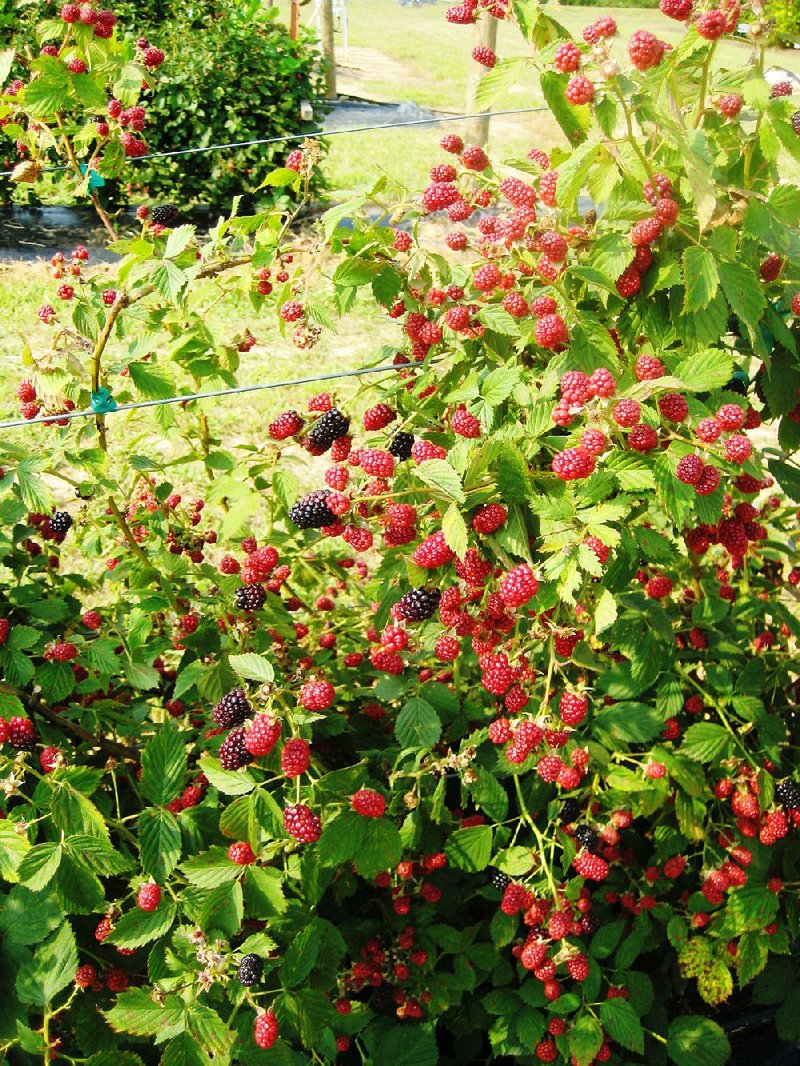JUNE
May gave us plenty of rainfall, and in some cases, too much. We also had mild temperatures with some really cool days. It would be nice if that trend were to continue, but that is wishful thinking. June typically brings much higher temperatures and plenty of sunlight. Rain tends to become a bit spottier, so pay attention to water needs.
• Start scouting for insects and diseases. Blossom end rot, squash vine borer and tomato blights show up in the vegetable garden. Spider mites, lacebugs and bagworms in the ornamentals often appear in June, so pay attention and control as needed.
• Vegetables are bountiful. The cool-season vegetables have been prolific, and many are nearing the end of their life cycle. As one plant goes, put another in its place to use all the garden.
• Now is a great time to plant sweet potatoes, southern peas, pumpkins, okra, winter squash and gourds.
• You can keep planting peppers, eggplant and tomatoes, as they will continue to produce all summer. Be sure to water, mulch and fertilize.
• We typically get our first calls about blossom-end rot after a heavy downpour. Blossom-end rot starts as a water-soaked spot on the bottom of the tomato, which quickly turns black. While it looks like an awful disease, it is really a calcium deficiency typically caused by fluctuations in moisture levels. Mulch your plants and try to keep the moisture levels even. Spraying with Stop Rot can help.
• If you have any spring-blooming shrubs that still need pruning, do so as soon as possible. No pruning should be done after mid-June. Temperatures get higher and higher and plant recovery time would be slower. If the plants don't have ample time to fill back in, they won't have as many flowers next spring. Only prune if there is a reason.
• If you have not fertilized your spring-blooming shrubs, do so now. One application a year should suffice on most trees and shrubs.
• Lawns have fully greened up, and we are into the weekly mowing routine. If you have zoysia and St. Augustine, one application of slow-release high nitrogen fertilizer should be enough for the year. Bermuda grass responds the best to nitrogen, and could be fertilized monthly -- if you want to mow twice a week. Two applications a year should be sufficient.
• You don't need to keep your lawn wet. Letting it dry out in between watering is a good thing. When mowing, don't remove more than one-third of the leaf blade at a time, or you will stress your lawn. Weeds have been quite prolific all winter and now the summer weeds are taking over. A thick lawn is your best defense against weeds.
• As mild as May was, many gardeners still have blooming pansies and violas, but it is time for summer color. Our nurseries are loaded with options. Some take heat better than others. Heat-tolerant, sun-loving plants include cuphea, lantana, pentas, periwinkle and zinnias. For the shade, try caladiums, dragon wing begonias, impatiens and torenia. Wax leaf begonias and coleus can stand sun or shade.
• To keep your annuals blooming all summer, fertilize regularly. Even petunias and callibrachoas will bloom all summer if they are given regular fertilization. Water as needed.
• As temperatures and humidity rise, tropical plants are in their element. From hibiscus, mandevilla and ixora to jatropha, bromeliads and allamanda, there are plenty of choices. Garden centers get new tropical plants weekly. Along with annuals, these plants need regular fertilization and water to keep blooming.
• Many perennials benefit from having their spent blooms cut off (called deadheading) so they can put all their energy into flower production and not seed production. Daylilies, coneflower, gaillardia and other seed-setters should be deadheaded weekly. If you have roses that set seeds, or rose hips, deadheading those will keep flower production higher.
• Perennials don't need as much nutrition as annuals, and different plants have different needs. Most roses need monthly fertilizer during the growing season, except for the Earth Kind roses, such as Knockout and Drift. Two to three applications a year is enough for them.
PLANT OF THE MONTH
One of my favorite fruits of summer is the blackberry.
Most of us dreaded picking blackberries as kids because of all the thorns on the canes, but the end result made it worth the pain. Today we can get our blackberries without scratches because of the many thornless varieties. The University of Arkansas Division of Agriculture has been a world leader in blackberry breeding. Researchers' blackberry cultivars have become the standard worldwide.
All of the blackberry cultivars developed by UA have been named after American Indian tribes. While there are great thorny and thornless varieties, I prefer the thornless. Thornless UA varieties include "Apache," "Arapaho," "Natchez," "Navaho," "Osage" and "Ouachita." Thorny varieties include "Chickasaw," "Choctaw," "Kiowa" and "Shawnee."
Blackberries are native to Arkansas and are easily grown statewide with little need for pesticides or spray programs. They have an upright growth habit and typically don't need much support once established.
Most of the blackberries grown in the home garden produce their fruit on canes that were grown the year before. Once the canes bear fruit, they die out and make way for new canes, which have the fruit the next year.
Blackberries grow best in full sun in a well-drained soil. Fertilize as they begin growing in the spring and again after you harvest. After harvest, remove the old canes and keep the new canes pruned to a manageable height. Plant your blackberries where they have room to grow and spread, as they are long-lived and do multiply over time.
Janet B. Carson is a horticulture specialist for the University of Arkansas Cooperative Extension Service.
HomeStyle on 06/03/2017

